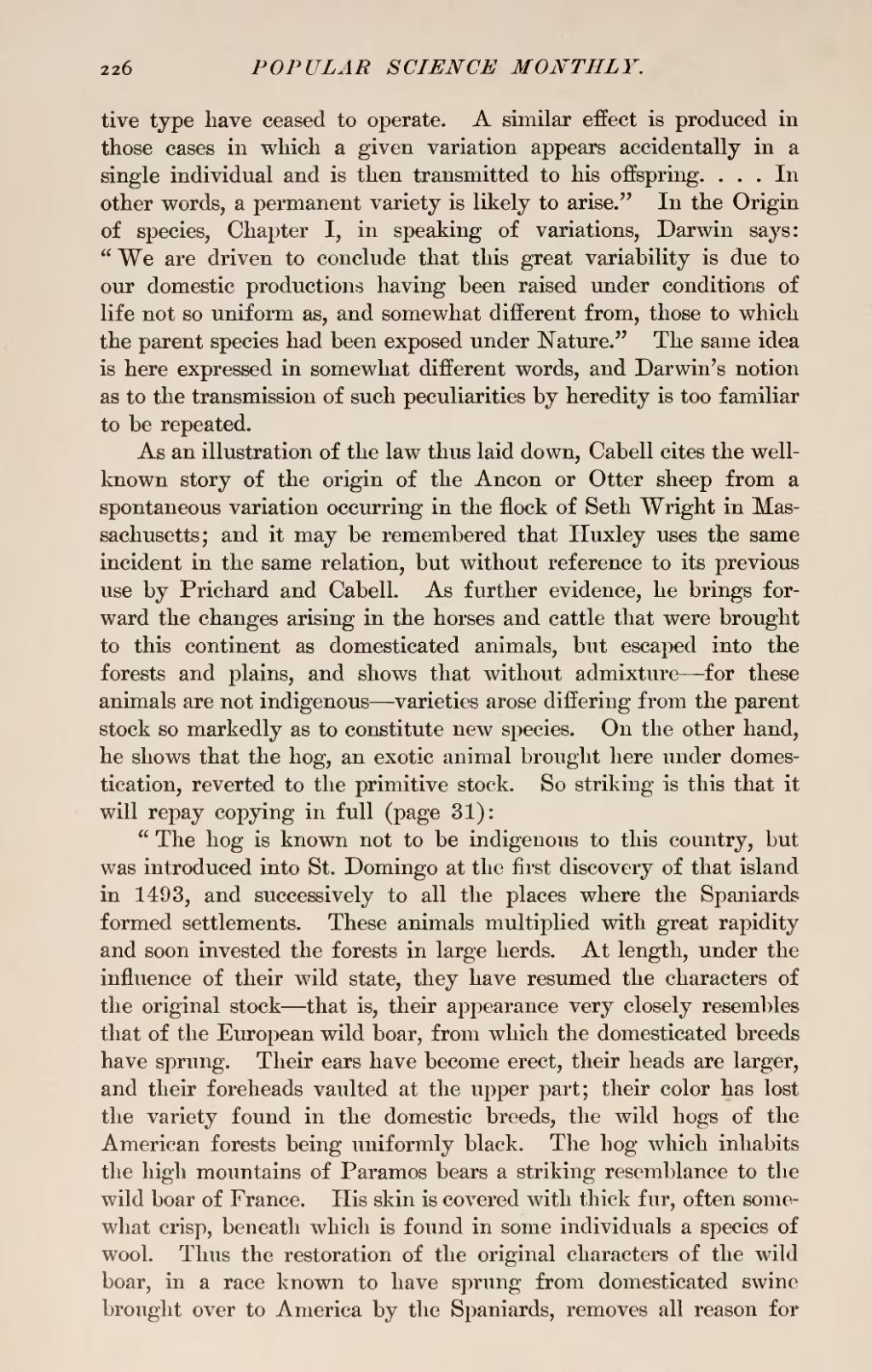tive type have ceased to operate. A similar effect is produced in those cases in which a given variation appears accidentally in a single individual and is then transmitted to his offspring. . . . In other words, a permanent variety is likely to arise." In the Origin of species, Chapter I, in speaking of variations, Darwin says: "We are driven to conclude that this great variability is due to our domestic productions having been raised under conditions of life not so uniform as, and somewhat different from, those to which the parent species had been exposed under Nature." The same idea is here expressed in somewhat different words, and Darwin's notion as to the transmission of such peculiarities by heredity is too familiar to be repeated.
As an illustration of the law thus laid down, Cabell cites the well-known story of the origin of the Ancon or Otter sheep from a spontaneous variation occurring in the flock of Seth Wright in Massachusetts; and it may be remembered that Huxley uses the same incident in the same relation, but without reference to its previous use by Prichard and Cabell. As further evidence, he brings forward the changes arising in the horses and cattle that were brought to this continent as domesticated animals, but escaped into the forests and plains, and shows that without admixture—for these animals are not indigenous—varieties arose differing from the parent stock so markedly as to constitute new species. On the other hand, he shows that the hog, an exotic animal brought here under domestication, reverted to the primitive stock. So striking is this that it will repay copying in full (page 31):
"The hog is known not to be indigenous to this country, but was introduced into St. Domingo at the first discovery of that island in 1493, and successively to all the places where the Spaniards formed settlements. These animals multiplied with great rapidity and soon invested the forests in large herds. At length, under the influence of their wild state, they have resumed the characters of the original stock—that is, their appearance very closely resembles that of the European wild boar, from which the domesticated breeds have sprung. Their ears have become erect, their heads are larger, and their foreheads vaulted at the upper part; their color has lost the variety found in the domestic breeds, the wild hogs of the American forests being uniformly black. The hog which inhabits the high mountains of Paramos bears a striking resemblance to the wild boar of France. His skin is covered with thick fur, often somewhat crisp, beneath which is found in some individuals a species of wool. Thus the restoration of the original characters of the wild boar, in a race known to have sprung from domesticated swine brought over to America by the Spaniards, removes all reason for

